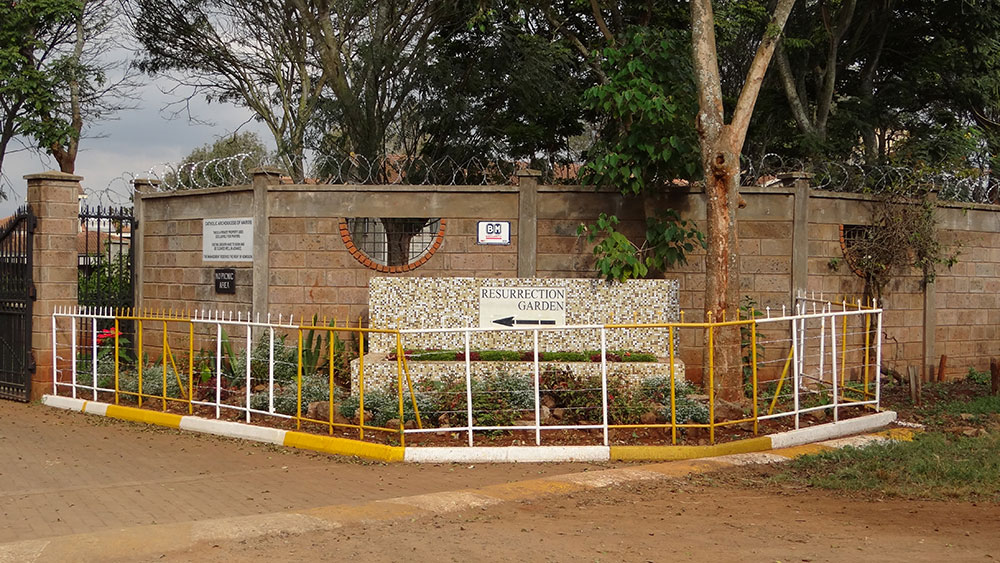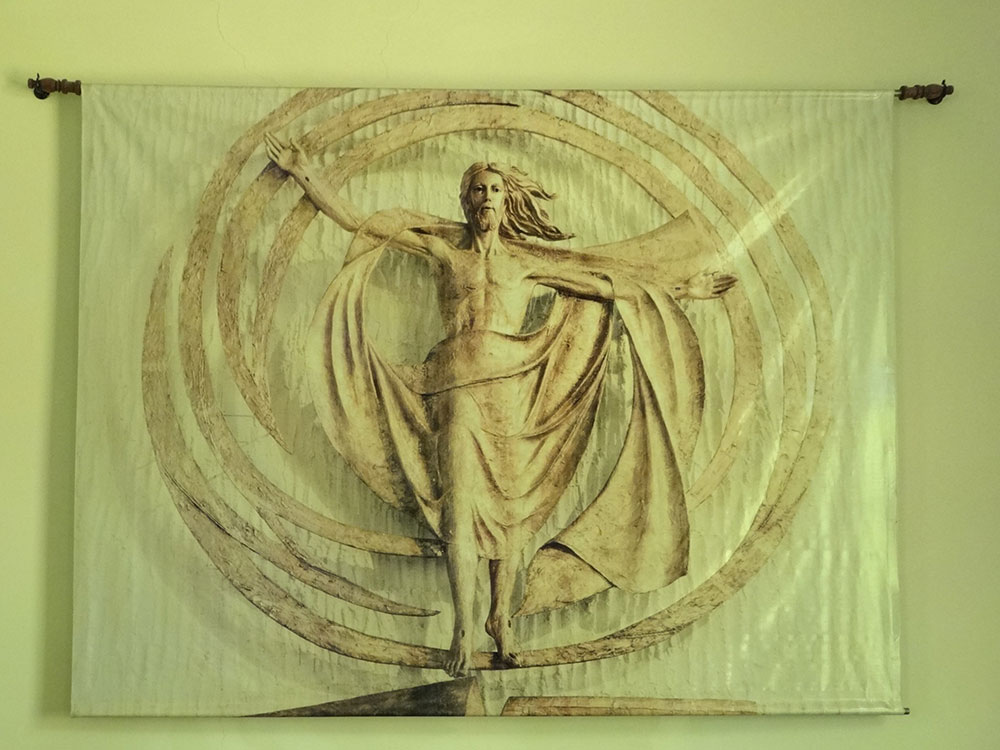
In the year 1984, the Servant of God His Eminence Maurice Michael Cardinal Otunga went to visit a Consolata missionary Fr. Ottavio Santoro, in his office at the Consolata Fathers, Westlands and asked him whether he could assist him in getting for the Archdiocese of Nairobi a Way of the Cross on large bronze panels. Fr. Santoro volunteered to consider the matter and to get all the necessary information from the suppliers in Italy.
The Cardinal had in mind to place the bronze Stations of the Cross around the Holy Family Minor Basilica of Nairobi in the niches carved out for the chapels, which were added to the Cathedral before being declared a Minor Basilica.
An Italian architect, Luciano Massetti, came all the way from Rome to visit the Basilica and see how to position the bronzes. Fr. Santoro suggested to the Cardinal that rather than having the panels around the Basilica, they be positioned around the square in front of the Basilica, although the same Fr. Santoro was not convinced that it was the right place either. The Cardinal asked Fr. santoro to look for a suitable place for the project.
On 19th October 1988, Pope St. John Paul II blessed the eight panel of the Way of the Cross in St. Peter’s Square after the Wednesday General Audience, at the presence of some friends and benefactors of the Archdiocese of Nairobi. Those present included Cardinal Otunga, Fr. Santoro, Mr. Roberto Mezzaroma (representing his brother Pietro who was not well), Mr. Piero Massetti of Mar Statue Sacre and Mr. Luciano Finocchiaro, one of the artists. The photo of the panel while John Paul II was blessing it appeared on the Osservatore Romano of the following day, 20th Oct. 1988.
By the time the first five bronze panels reached Nairobi in September 1987, it became more pressing to find a suitable plot for the Way of the Cross where people could spend time in prayer and meditation. With the pressure to have a plot as soon as possible, Fr. Santoro remembered the plot on Rhino Park Road that he had asked earlier for some sisters and since these sisters were no longer interested, he decided to buy the 12 acres’ land since it seemed suitable for the purpose. The land was bought and the deal was finalized on 2nd March 1989. In March 1990, the works began with the blessing of the ground by Cardinal Otunga, which took place where the present main sacristy is located, at the presence of Fr. Santoro, some building consultants and a group of Dimesse Sisters. Later, 10 m ore acres were added.
In the beginning of 1994, most of the work was completed and the Cardinal suggested that the time for the inauguration of the Resurrection Garden had come. So, he proposed the Solemnity of Corpus Christi as the day of the inauguration. So, on that Sunday of 5th June 1994, at the presence of many Priests, Religious and lay people, the Resurrection Garden was inaugurated and officially blessed by Cardinal Otunga.

The Mass was followed by a procession with the Blessed Sacrament through the way of Salvation, stopping for few minutes of adoration at the Chapel of the Last Supper, concluding at the door of the Main Church with the solemn blessing. The Church and surroundings were dedicated to “Jesus Christ our Bread of Life and our Resurrection”.
The following year, on 19th September 1995, Pope St. John Paul II blessed the Resurrection Garden by his presence during the conclusion of the First Synod for Africa.
Resurrection Garden became continually a place for silence, prayer and meditation with hundreds of thousands of pilgrims of all faiths visiting the garden every year.
Fr. Santoro continued adding other edifices in the garden like: The Mosaic of Michelangelo on the Second Coming of Christ; Over 100 Our Lord’s Prayer in various languages of the world engraved on marble; The Silence of God – a marble with various Quotations from the Bible on the mystery of suffering; the Chapel of the Empty Tomb and the Memorial Chapel of Cardinal Otunga.
Cardinal Otunga died on 6th September 2003 and was buried in the Diocesan Cemetery as St Austin’s as per his wishes. Two years after his death, Fr. Santoro asked his successor Archbishop Raphael Ndingi the permission to build in the Resurrection Garden a memorial Chapel for Cardinal Otunga and where they would transfer the remains of the Cardinal. Archbishop Ndingi told Fr. Santoro to wait until he would consult the senate of the Archdiocese. In fact, after a short time, he was given the permission to go ahead with the project. The body of Cardinal Otunga was exhumed and transferred to the Resurrection Garden in 2005.
Fr. Ottavio Santoro, the founder of the Resurrection Garden, started having problems with his health from 2010 and he eventually rested on 18th November 2015. He was buried on 24th November 2015 in the Consolata missionaries’ Cemetery in Nyeri.

